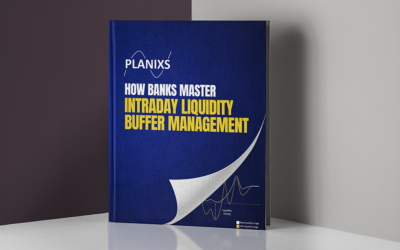All bank failures start with a collapse of confidence and trust. So it follows that credit is trust expressed in monetary terms – a creditors’ belief that borrowers will repay principal and pay interest on loans. In essence, we judge banks on what they may do, or have done. Credit ratings play a crucial role in figuring this out, ever more so as operating conditions place increased strain on the banking industry. And countries. Ratings agency Fitch has now downgraded the US federal government from AAA to AA+, Thus, Fitch analysts are of the opinion that countries like Germany or Australia, are better able to meet their obligations than the US.
Which US banks were downgraded recently?
The move from Fitch comes after five banks, including some of the biggest lenders in the US, had their credit ratings downgraded by S&P Global Ratings. The credit agency cited “tough operating conditions” that are taxing the banking sector as it downgraded its rating for two other banks. The S&P provided further justification saying that these banks are exposed to risks that may render them “less resilient than similarly rated peers.”
S&P’s action was taken just two weeks after Moody’s downgraded the credit ratings of ten small and midsize US banks due to mounting stresses and increased financial risks. These downgrades follow hard on the heels of a banking crisis that started in March 2023 when Silicon Valley Bank, the nation’s 16th largest bank, failed a few days after depositors staged a traditional bank run.
List of U.S. banks downgraded by S&P
These five banks have a combined asset base of over $400 billion:
| KeyCorp | 20th | $192 billion |
| Comerica Inc. | 31st | $90 billion |
| Valley National Bancorp | 37th | $61.7 billion |
| Associated Banc Corp. | 49th | $41 billion |
| UMB Financial Corp. | 50th | $41 billion |
Why were these banks downgraded or reviewed?
S&P said it reviewed these banks because it believes they have “potential risks in multiple areas.”
The ratings firm added: “For instance, some that have seen greater deterioration in funding — as indicated by sharply higher costs or substantial dependence on wholesale funding and brokered deposits — may also have below-peer profitability, high unrealized losses on their assets, or meaningful exposure to CRE,” or commercial real estate.
S&P’s concerns underscore the broad landscape of challenges for banks leading into 2024. Delving deeper, we must also note the impact of higher interest rates in the US and UK. For example, the Federal Reserve has taken a number of deliberate steps, which may have far-reaching consequences.
High interest rates bite in the US and UK
The Federal Reserve’s hikes in interest rates means that banks face rising borrowing costs, even while the value of certain bond assets has fallen:
“The sharp rise in interest rates and quantitative tightening deployed since March 2022 to combat high inflation are weighing on many U.S. banks’ funding, liquidity and spread income,” S&P reported. “These factors have also caused the value of banks’ assets to fall and raised the odds of asset quality deterioration.” Meanwhile, the recent Bank of England Financial Stability Report offers a challenging outlook for 2024, emphasising risks in economic growth, geopolitical tensions, and potential inflation resurgence. In short, banks need to proactively protect their financial resilience and manage liquidity risk.
Even though there are glimmers of hope, no one is predicting we will move back to the days of 0-1% interest rates any time soon. The Confederation of British Industry (CBI) projects that the Bank of England will not cut interest rates until 2026 at the earliest, despite the expectations of some in the City of London for rate cuts in the coming year.
The CBI forecasts weak economic growth for the UK in 2024, citing significant headwinds. Growth is expected to be 0.6% in 2023, 0.8% in 2024, and 1.6% in 2025. Consumer spending is anticipated to remain weak, with a growth forecast of 0.4% in the following year.
The BoE identifies external factors like high public debt levels and vulnerabilities in the Chinese property market as potential amplifiers of shocks in the UK economy.
Real-time treasury tech investment for resilient banking
Financial stress doesn’t wait for business hours. As challenges continue to loom, it’s a strategic move for banks to fortify their positions through intelligent liquidity management. Real-time data enables you to adapt swiftly, stay ahead of regulatory requirements, identify and address liquidity risks and minimise the impact of economic uncertainties.
Real-time liquidity management is a gateway to transforming your operations and untapping opportunities for growth. In short, you get a goldmine of actionable insights that allow you to be a change-maker in your organisation.
How to optimise liquidity usage and extract value from liquidity resources
At the heart of the Planixs response is its award-winning, cloud-enabled Realiti® platform that now helps global institutions and financial firms of all sizes including Santander, Lloyds Banking Group, NatWest and Scotiabank, to realise the full potential of their enterprise-wide liquidity.
Realiti is the only liquidity intelligence solution to deliver real-time, enterprise-wide 360° visibility of a firm’s liquidity landscape, control over treasury activities and value-creating insights, in a single platform.
Acknowledged as the best-in-class solution for regulatory confidence, the outcomes for Planixs clients speak volumes – millions in savings on intraday liquidity buffer costs, ensuring compliance with the BCBS248 regulatory agenda, and fostering efficient and effective funding operations.
You are warmly welcome to ask us any questions. Book a call to get expert advice from Planixs, we’d love to talk to you.
Actionable Advice: How to address a credit rating downgrade
Credit rating downgrades have a profound impact on the banking sector. These downgrades not only affect financial health but can present significant obstacles when raising capital.
Credit rating downgrades can unleash a domino effect that extends well beyond your balance sheets, the major challenges are:
Increased Borrowing Costs When a bank’s credit rating is downgraded, the cost of borrowing rises. This results in higher interest payments on existing debt, and increased expenses for future capital-raising efforts. These heightened costs can significantly impact your bank’s profitability and financial stability.
Limited Access to Capital Markets With reduced access to capital markets, your bank may find it more challenging to raise new capital or refinance existing debt. This restriction can hinder the bank’s ability to expand its operations or take advantage of profitable investment opportunities.
Regulatory Scrutiny Downgrades often attract regulatory scrutiny and closer monitoring by government agencies. This oversight can lead to stringent capital adequacy requirements and additional compliance costs. It may also require banks to hold higher levels of intraday liquidity to ensure their stability, further straining their financial resources.
Real-time data offers tangible benefits
To overcome all this, leading banks are implementing solutions that offer real-time visibility across their liquidity landscape. Here are the tangible benefits that real-time liquidity technology can offer your bank:
Data Analytics and Risk Assessment By analyzing your datasets in real-time, you can identify potential problems early, allowing your bank to take proactive measures to safeguard financial health.
Enhanced Stress Testing With real-time data, banks are able model scenarios to assess their resilience to economic shocks. These insights can help your bank to implement risk-mitigation strategies and prepare for the unexpected.
Automation of Regulatory Compliance Streamlining regulatory compliance processes reduces the burden of additional compliance costs. By automating routine compliance, you can allocate resources more efficiently, ensuring that you are ahead of regulatory requirements.
Addressing a credit rating downgrade
To avoid the domino effect that follows a credit rating downgrade, we recommend that banks, even smaller ones, implement the following steps:
Diversify Funding Sources Relying solely on traditional funding sources can leave a bank vulnerable. To mitigate this risk, banks should diversify; exploring options such as digital lending platforms, peer-to-peer lending, and innovative financial instruments.
Continuous Monitoring Banks should be able to assess their financial health and risk exposure in real-time. Regularly reviewing credit portfolios and making necessary adjustments can help banks maintain their creditworthiness.
Invest in Talent Banks should invest in skilled professionals who are well-versed in data analytics, risk management, and technology. Having the right talent on board can make the difference when navigating challenges.
Partner with Technology Providers The integration of intelligent tech into liquidity management processes can enhance risk assessment, streamline compliance, and provide new avenues for raising capital, ultimately ensuring the resilience and prosperity of your bank.
Banks looking to improve their intraday liquidity management are likely to find significant value in the practical approach recommended by liquidity specialists from Planixs and, Oliver Wyman in their detailed report, Intraday Liquidity Management: Are you ready for the next level? By leveraging these recommendations, your bank will be able to employ effective risk analysis strategies and optimize costs.
Download the full report now and take steps to future-proof your credit rating through smart intraday liquidity management.



